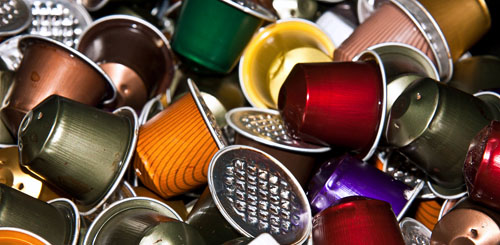Coffee Conundrum: Does Keurig’s Quick Convenience Outweigh its Health Hazards?
Attention Keurig coffee drinkers: That wonderfully convenient, fast-as-lightning, high-technology machine could be making you sick. So says a holistic nutrition educator who calls herself “The Real Food Revivalist.”
Her fear has to do with the clever contraption’s brewer and its cleanliness over time.
“When I packed up my kitchen to move 500 miles south, I wanted to make sure that my Keurig was completely empty and dry before it went on the moving truck,” wrote Erin Chamerlik in a health blog titled “Why I Kicked My Keurig to the Curb.”
The Canadian company’s Web site confirmed Chamerlik’s suspicion that the task before her was impossible.
“Once your Keurig home brewer has been primed, you cannot empty the water from the inside,” according to Keurig.com. “The internal tank of the brewer cannot be drained.”
The inner-microbiologist in all of us should cringe at such a reality. Don’t we empty, clean and refill our pets’ water bowls every day so a slimy film doesn’t develop? Don’t we change the water in our flower vases every few days so it doesn’t start to smell?
There are other concerns to consider. In South Florida, standing water is a no-no, as it serves as a potential breeding ground for mosquitoes, which naturally lay their eggs in estuaries, ponds, rivers and streams. In colder climates, standing water also is a no-no because it freezes, damaging the vessel in which it is contained.
“Biofilms are found wherever there is water and a surface to stick to (like your shower curtain),” Chamerlik wrote. “Bacteria forms a slick biofilm when grown in moist, dark places, and so do molds.”
The heat of the water is not high enough to kill off any of the microbes in the brewer, nor the rubber tubing.
“For that to happen, the water would need to reach boiling temperature and stay there for one minute,” Chamerlik writes.
Saint Louis University assistant professor Donna Duberg said coffee makers other than the Keurig can harbor germs, too.
“Germs are present in every corner of our lives,” Duberg told Fox News Magazine. “Are there germs in our coffee makers? Yes. Will they make us sick? Maybe, if there are enough of them, and especially if we don’t clean our pots often enough.”
While Keurig.com offers advice on cleaning its device, the tips refer to the removable water reservoir; the Web site suggests descaling it every three to six months.
Here is some cleaning information for those of you who bask in the glory of a fresh cup of joe in less than one minute and don’t want to kick that Keurig to the curb.
-
- Use a clean, damp, nonabrasive cloth to wipe the machine’s exterior.
- Remove the drip tray and either wash it with warm, soapy water or place it in the dishwasher.
- Remove the K-Cup holder and also wash it with warm, soapy water or place it in the dishwasher.
- Wash the removable water reservoir by hand only, as it is not dishwasher-safe.
- Replace the reservoir and pour 10 ounces of vinegar into it and run it through a brewing cycle without inserting a K-Cup. Repeat.
- Finally, fill the reservoir with fresh water and run it through a cycle without a K-cup.
Share This



